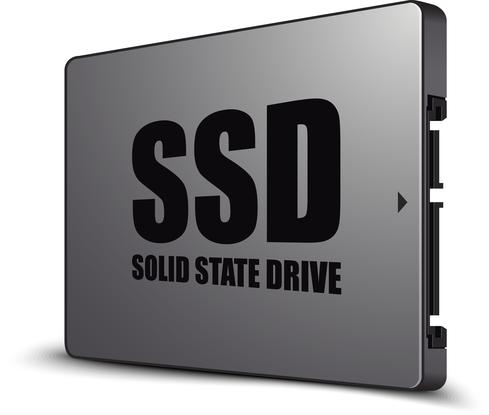SSD Pricing Vs. HDD Costs
Any way you cut it, solid-state drives are becoming a better bargain than hard disk drives.
October 28, 2015

In some ways, the solid-state drive/flash market is a clear example of irrational behavior. We have a product that supercharges systems and reduces overall costs by large factors, but buying that product often seems to hinge on the price of the device itself.
Combined with this is the marketing hype intended to create a class of “enterprise SSD” that separates commodity SSDs from the “more sophisticated” enterprise-class units. As a result, there's a tiered pricing scheme, but the demarcations are blurred, unlike the tiering of hard disk drives that we’ve known for years.
Can we use cheap SSD in the enterprise? This is a bit like asking if we can use cheap HDD. The answer is, “Of course!” However, there is a caveat: . That cheap SSD has to have battery hold-up power built-in to save unwritten data blocks in the event of a system power failure, but this is normal for any decent solid-state drive.
The difference between SSDs and HDDs is simply performance. We are talking 5x performance for sequential operations and as much as 50x for random. In other words, if performance is your metric, one SSD is worth perhaps 20 HDDs. (Hint: SSD wins that price comparison handily!)
Studies have shown that while SSDs are more expensive than HDDs on a price-per-terabyte basis, the fact that the minimum size of an HDD is reaching 1 TB means that systems such as PCs and embedded systems that don’t need a terabyte can use a cheaper SSD (with just the needed capacity). This undercuts a large swath of the HDD market in desktops and other low-cost, low-performance gear.
The idea of using smaller SSDs may also work really well with microservers, which typically don’t need much storage on each microserver module. This would boost response time and performance and also reduce power needs.
Now that we’ve disposed of a huge part of the HDD market with this “right-sized SSD” approach, let’s look at the thornier issue of servers. Most of the servers sold today end up in clouds or virtual clusters. With high VM counts and Docker containers increasing the instances per server by as much as 3x or 4x, we have an IO starvation problem that SSDs can fix. Putting in an SSD is cheaper than adding three more HDDs.
Still, there are IT purists who still use price-per-megabyte as the metric for storage drive decisions. Let’s look at the nose-to-nose pricing for SSDs versus HDDs and see where the game sits. First though, I must mention the classic FUD on this issue, which is to measure a solid-state drive against that $30 terabyte bulk drive. This is comparing a racehorse to a snail! Often, too, people make comparisons between an “enterprise” SSD such as a PCIe unit and cheap bulk HDD. That’s misleading, since PCIe drives are in a totally different class of performance to regular SSD, and are very expensive as a result.
A fairer comparison is to look at mid-tier SSDs against 10K RPM HDD, the fastest HDD now on sale. On a capacity basis, we have SSDs up to a couple of terabytes in the mainstream. Compared to the 10K RPM HDD of the same capacity, the SSD is cheaper.
SSD is still roughly 4x the price when comparing against bulk 1 TB HDD. Power savings and better reliability close the gap quite a bit, but SSDs are still more expensive than cheap bulk HDDs. Even here, however, the issue is a bit of a red herring. With SSDs' extra performance making compression and deduplication possible, we need fewer drives of any type and are more focused on latency of data delivery. Here, the SSD is a very clear winner.
Figure 1: 
(Image: YuriyVlasenko/iStockPhoto)
While there will continue to be arguments about SSD versus HDD pricing, SSD is close to winning the market. Further price erosion and capacity improvements to be expected in 2016 and 2017 will close any remaining gap to the point that we will focus on the performance and reliability benefits of SSD, rather than price and capacity questions.
Meanwhile, all-flash arrays are decimating high-end HDD appliance sales in a market segment that really does understand the cost/performance issue.
What else is happening in the near and longer term that impacts the SSD/HDD pricing debate? 3D NAND production is mainstream, lowering drive costs and increasing capacities. We are seeing SSDs that exceed HDDs' capacity “wall” at 10 TB by going up to 16 TB. SanDisk has introduced a line of SSDs aimed at the desktop and the IoT markets with pricing per drive lower than the cheapest hard drive.
On the negative side, Western Digital has purchased SanDisk, which may reduce competition and delay SSD price drops in the next few quarters. Intel is investing $5.5 billion in new fab capacity in China, though some of this may target its 3D XPoint memory technology, which may impact sales of high-end SSD. This new technology could disrupt the flash industry and delay price drops somewhat. However, in the longer term, both WD and Intel will be bumps in the road for SSDs and their ascendance over hard drives.
About the Author
You May Also Like




